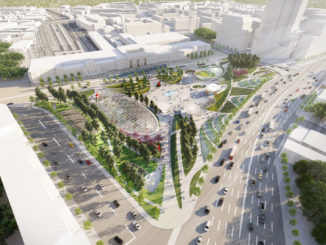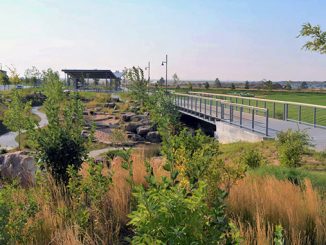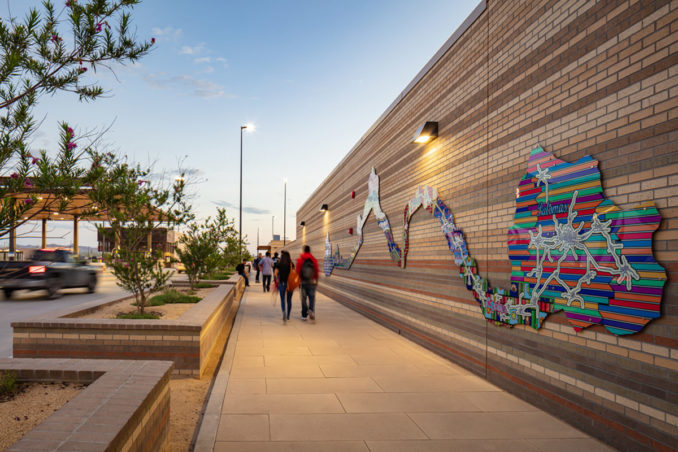
While providing safe, efficient, and expanded international entry processing for people and goods is the primary mission, Richter Architects’ design philosophy for this new port of entry aspires to welcome travelers to America with an architecture that inspires and conveys our country’s better virtues—architecture that serves and respects all people, embraces culture, conserves resources, nurtures ecology, protects habitat, celebrates diversity, and conveys a love of the land. From the beginning, the architect’s design vision integrated architectural details, terrain, sustainability goals, and functional needs into a comprehensive design that accentuates a sense of place and community.
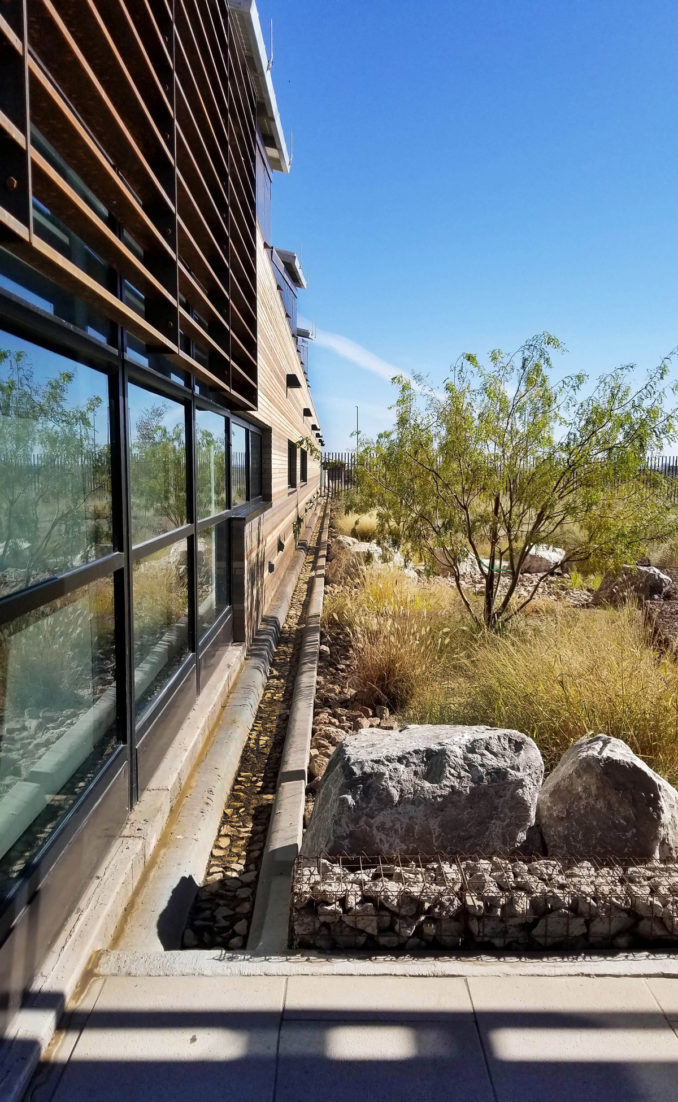
Through this careful design strategy, the new facility has achieved LEED Platinum certification and is pursuing SITES Gold Certification. MRWM’s landscape design concept strives to create an attractive, high performance desert landscape inspired by natural and cultural typologies found in the region including the Chihuahuan Desert Grasslands, Chihuahuan Desert Scrub, desert washes, desert riparian landscapes, desert oases, and water harvesting terraces.
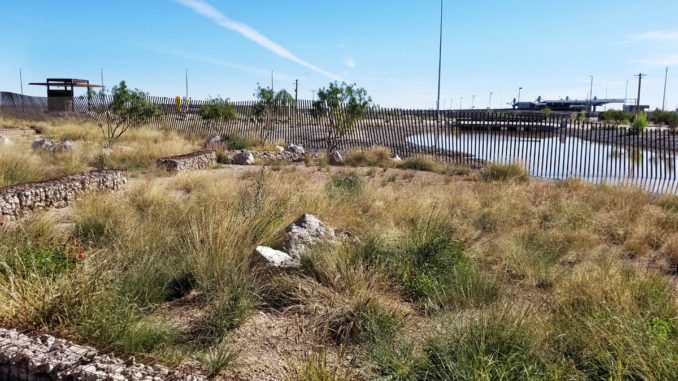
Although most travelers pass through the port in private and commercial vehicles, several landscape features were designed for the comfort of Port employees and pedestrian travelers. A shaded outdoor patio provides space for Port employees to enjoy open views to the west of the port year round. The building configuration protects the patio from harsh western sun and winds during the spring and summer months. Shade structures, trees, and high solar reflectance materials decrease the heat island affect at the Port and provide a more comfortable passage for the hundreds of students who cross the port on foot every day to attend school in Columbus and Deming, NM.
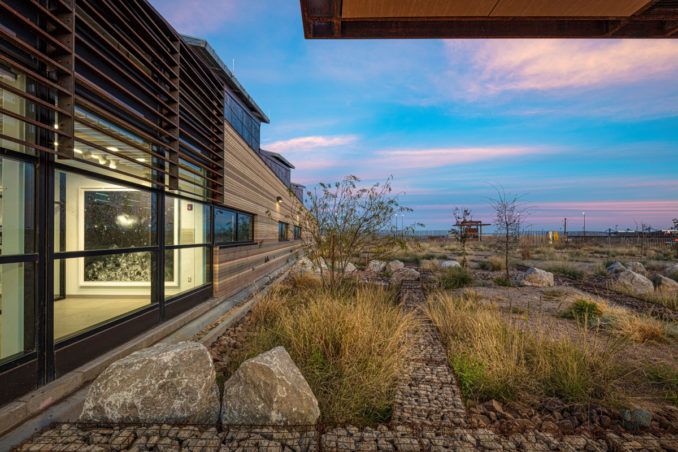
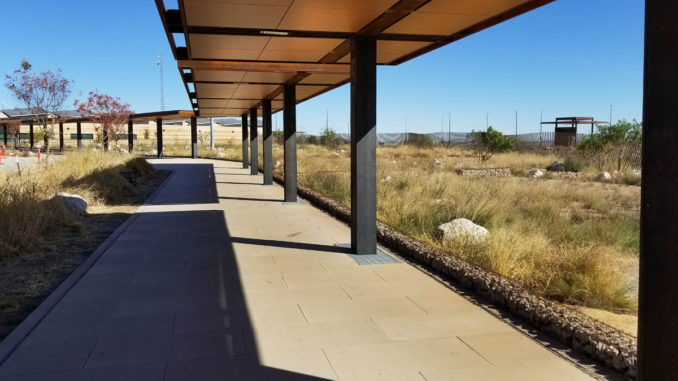
The landscape and grading have been designed to integrate passive water harvesting throughout the site, reducing the dependence on potable water for irrigation and creating aesthetic and habitat amenities while managing stormwater on-site. Stormwater is collected in small retention and detention basins where water can infiltrate into the ground. Water harvesting terraces within the core landscape area slow down runoff and detain stormwater in shallow basins. Water harvesting sponges are used on the terraces to enhance infiltration, encourage nearby trees to send roots deeper and to build soils. All basins are seeded and planted to encourage evapotranspiration and improve infiltration through root growth.
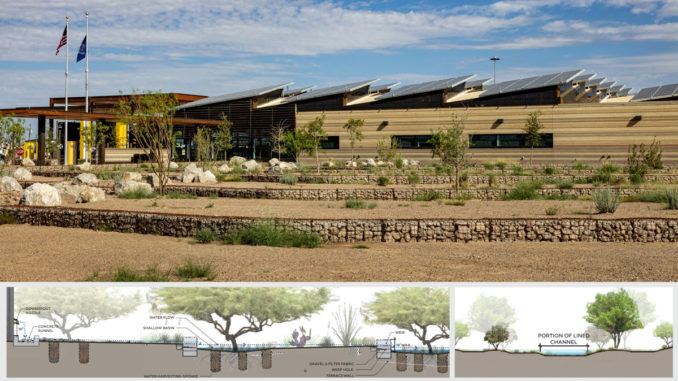
Existing soils were analyzed and amended as needed to create growing conditions needed for native and desert adapted plant materials. The goal was to amend existing native soils to create a growing medium conducive to the native and adapted plants, rather than import heavily amended soils that are overly rich in organic matter. This approach was more cost effective and will yield better long term results. Healthy, biologically active soils provide many benefits in the landscape including increased water retention, nutrient cycling and buffering of pollutants.
Native soils were stabilized with revegetation seeding in the native landscape areas to minimize erosion and blowing sand. Seed blends were selected with grass, wildflower, and shrub species that can survive on less than 9″ of annual precipitation. The revegetation seed mix was customized to the soil test results and emphasized salt tolerant species. These plants may become dormant during extended periods of drought, but will recover when more water is available. The design uses exclusively native and drought adapted plants, showcasing the beauty of Chihuahuan desert flora for all who pass through.
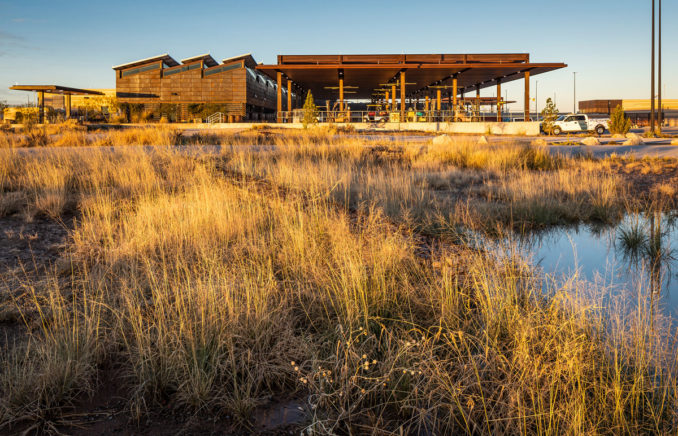
In order to maximize irrigation efficiency and effectiveness, the irrigation system employs five distinct irrigation types based on the distinct landscape areas. The varying irrigation needs include both temporary and permanent spray, low-flow bubbler, and sub-surface drip systems.
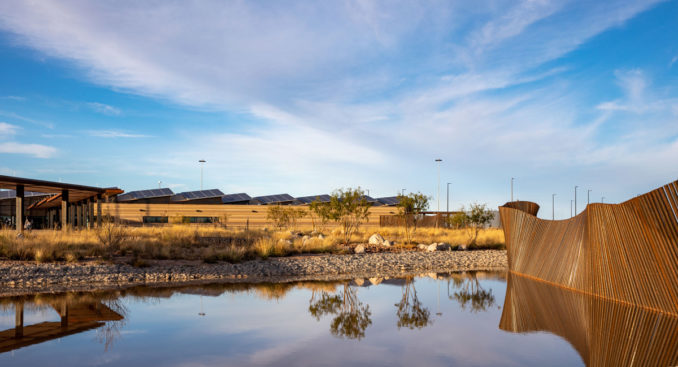
Integral to the architectural design is a series of roof monitors of solar arrays and clerestory windows oriented north and east to diffuse abundant but controlled light into the work areas. Openness throughout both public and staff spaces enhance security and comfort. Canopies and shaded walkways provide respite from the desert sun.
U.S. Land Port of Entry, Columbus, New Mexico
Location: Columbus, New Mexico, USA
Landscape Architect: MRWM Landscape Architects (Albuquerque, New Mexico, USA)
Owner: United States General Services Administration
Architect: Richter Architects (Corpus Christi, Texas, USA)
Photography Credit: Robert Reck Photography, Richter Architects, and MRWM Landscape Architects


